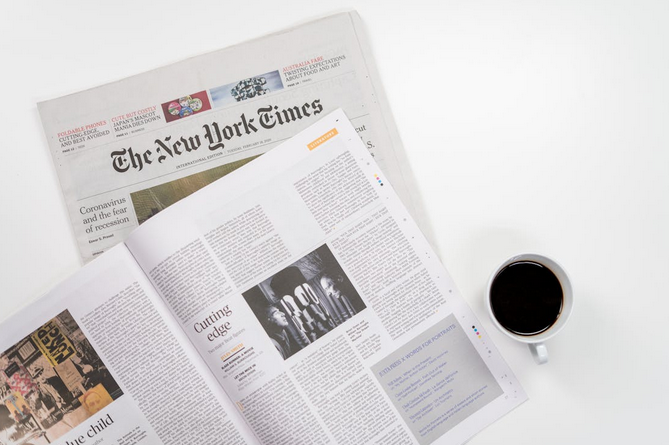
The Ultimate Guide to Staying Informed: Beyond the Headlines
In a world overflowing with information, where headlines flash across our screens like fireworks on the Fourth of July, it’s all too easy to get caught up in the whirlwind of sensationalism and sound bites. But how do we sift through the noise to find truth, depth, and understanding? Welcome to “The Ultimate Guide to Staying Informed: Beyond the Headlines,” your go-to resource for transforming passive consumption into active engagement. Whether you’re a news junkie or just looking to become more discerning about what you read, this guide will empower you with tools and strategies to dive deeper into stories that matter.
Choose Your Sources Wisely
The first step in getting the latest news is to pick reliable and diverse sources. It’s tempting to follow just one platform or outlet, but this can create a narrow view of the world. To get the full picture, it’s important to diversify where you get your information. Try to mix up mainstream outlets with niche publications. For example, a major news outlet like BBC or Reuters might offer broad coverage of global events, while a specialty site like The Verge might give you the latest on tech or innovation.
Similarly, consider following international news sources to understand how events are being covered around the world—this can help you see how news stories differ depending on where you are. It’s also a good idea to check a mix of media types. Podcasts, YouTube channels, news apps, and even sites providing Kenya Latest news can give additional context or a more in-depth dive into the stories you care about.
Don’t Rely Solely on Social Media

While social media is great for getting quick updates and breaking news, it’s not always the most reliable place for accurate information. The problem with platforms like Twitter and Facebook is that anyone can share a headline or a link to a story, often without context or verification. This can lead to misinformation spreading quickly. That doesn’t mean you should avoid social media completely—far from it! It’s a great way to stay connected and get a pulse on what’s happening in real-time. Just remember to follow credible accounts, such as journalists, experts, and official organizations, to ensure the information you’re getting is trustworthy. And, before jumping into the comments section or resharing a post, make sure to verify the information from a reliable news outlet.
Be Critical of Headlines
Let’s be honest: headlines are designed to grab attention. They’re short, punchy, and sometimes downright dramatic. However not all headlines accurately reflect the content of the article, and this can be misleading. Next time you come across a headline that catches your eye, take a moment to think critically. Does the headline seem too sensational or emotionally charged? If so, it’s worth reading the article itself to see if the body of the text provides more nuanced information. Check multiple sources to get a broader understanding of the story. A responsible news outlet will offer facts, not just hot takes.
Fact-Check
Before you share something, take the extra minute to fact-check it. There are some excellent tools out there to help you verify the news you come across. Websites like Snopes, FactCheck.org, or Media Bias/Fact Check allow you to quickly confirm whether a story is true, misleading, or biased. Additionally, a quick Google search can often help you find multiple reputable sources covering the same topic. If all the top sources are reporting the same facts, the story is probably reliable. But if you’re only finding one or two sources, or if it’s a random website or social media post, take the time to dig deeper.
Keep an Open Mind
News is always evolving, and the story you read today might change tomorrow. Be open to updating your understanding as new information becomes available. We all have biases that shape how we interpret the news, but by actively working to challenge them, we can get a more balanced view of the world. If a story challenges your current beliefs or knowledge, don’t dismiss it immediately. Investigate it further. Engage in conversations with people who have different perspectives to broaden your view. And, most importantly, stay curious.
Use News Aggregators to Save Time
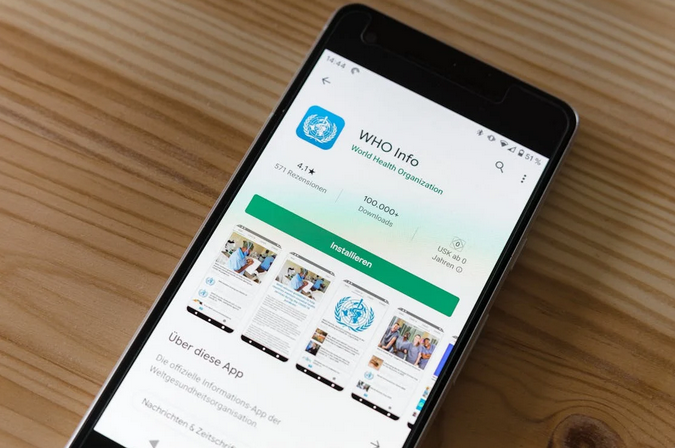
If you don’t have hours to spend browsing multiple sites, consider using news aggregators like Google News, Flipboard, or Apple News. These platforms bring together stories from different sources and tailor content based on your preferences. You can quickly scroll through a variety of topics, and with just a click, get in-depth coverage from reliable outlets. But remember, even with aggregators, it’s essential to cross-check information before taking it as gospel.
Take a Break From the News
Finally, it’s okay to step away from the constant stream of news. News fatigue is real, and taking a break can help you reset. The news will always be there when you’re ready to dive back in, but it’s important to balance staying informed with mental health. Try to disconnect for a bit, whether it’s during the weekend or after a particularly overwhelming news cycle.
Staying informed doesn’t have to be overwhelming. By choosing credible sources, questioning headlines, and doing your research, you can navigate the news world confidently. The key is to keep an open mind, stay curious, and always verify before you share. After all, true knowledge comes not from consuming everything you see, but from understanding the facts behind it.




 Meet the charming Corn Snake, also known by its scientific name Pantherophis Guttatus. This popular pet snake is not only beautiful but also renowned for its friendly and docile nature. Native to North America, the Corn Snake comes in a wide variety of colors and patterns, making it visually appealing to snake enthusiasts.
Meet the charming Corn Snake, also known by its scientific name Pantherophis Guttatus. This popular pet snake is not only beautiful but also renowned for its friendly and docile nature. Native to North America, the Corn Snake comes in a wide variety of colors and patterns, making it visually appealing to snake enthusiasts.
 Garter snakes, also known as Thamnophis, are some of the most friendly and fascinating snakes you can encounter. With their slender bodies and vibrant colors, they often make a delightful addition to any reptile enthusiast’s collection. One of the reasons why garter snakes are so popular is because of their docile nature.
Garter snakes, also known as Thamnophis, are some of the most friendly and fascinating snakes you can encounter. With their slender bodies and vibrant colors, they often make a delightful addition to any reptile enthusiast’s collection. One of the reasons why garter snakes are so popular is because of their docile nature.
 One of the best ways to learn any language is through immersion. Surrounding yourself with tons of Russian language and culture is one of the best ways to help you acquire the language quickly. Watch Russian movies, listen to Russian music, read books in Russian, or even start a blog in Russian. But be sure to start slowly and use Russian-English Subtitles. You can also pause it and go back to your dictionary to find out the meaning of the word, phrase, or sentence in that certain part of the movie. All these activities can help immerse yourself into the language and make it easier to pick up new words and phrases.
One of the best ways to learn any language is through immersion. Surrounding yourself with tons of Russian language and culture is one of the best ways to help you acquire the language quickly. Watch Russian movies, listen to Russian music, read books in Russian, or even start a blog in Russian. But be sure to start slowly and use Russian-English Subtitles. You can also pause it and go back to your dictionary to find out the meaning of the word, phrase, or sentence in that certain part of the movie. All these activities can help immerse yourself into the language and make it easier to pick up new words and phrases.

 Another important factor to consider when choosing the right 3PL is their flexibility and scalability. Ask yourself if the provider’s services can accommodate your current needs and if they can support you as you grow or take on new orders. Check if the 3PL offers different service levels so that you can scale up or down depending on changing demands. It’s also important to determine if they can offer services such as order customization and inventory management so that you can benefit from a more tailored solution.
Another important factor to consider when choosing the right 3PL is their flexibility and scalability. Ask yourself if the provider’s services can accommodate your current needs and if they can support you as you grow or take on new orders. Check if the 3PL offers different service levels so that you can scale up or down depending on changing demands. It’s also important to determine if they can offer services such as order customization and inventory management so that you can benefit from a more tailored solution. Finally, ensure that the 3PL you choose has a good reputation for customer service. Determine their responsiveness to queries and their track record when it comes to handling orders and resolving issues quickly. It’s also important to check if they offer any additional services, such as shipment tracking so that you can stay up-to-date with the progress of your orders. This will help you provide better customer service and ensure that your customers are happy with the experience.
Finally, ensure that the 3PL you choose has a good reputation for customer service. Determine their responsiveness to queries and their track record when it comes to handling orders and resolving issues quickly. It’s also important to check if they offer any additional services, such as shipment tracking so that you can stay up-to-date with the progress of your orders. This will help you provide better customer service and ensure that your customers are happy with the experience.
 One of the most important features of any day-trading software is the ability to recognize technical indicators and patterns. Technical indicators are mathematical equations that are used to predict future price movements. There are hundreds of different technical indicators, and each one can be used to generate buy or sell signals. Pattern recognition is another important feature that can help you identify potential trading opportunities. Day-trading software with pattern recognition capabilities can scan the market for specific chart patterns to predict future price movements.
One of the most important features of any day-trading software is the ability to recognize technical indicators and patterns. Technical indicators are mathematical equations that are used to predict future price movements. There are hundreds of different technical indicators, and each one can be used to generate buy or sell signals. Pattern recognition is another important feature that can help you identify potential trading opportunities. Day-trading software with pattern recognition capabilities can scan the market for specific chart patterns to predict future price movements.

 It is essential to know the different types of magic mushrooms available at your online dispensary. If you are new to buying magic mushrooms, you may not be aware of the different strains that are unique from others. Consider checking the different strains and the effects they have on the users. It is prudent to read about the side effects of various strains to understand the suitable one for you before buying them.
It is essential to know the different types of magic mushrooms available at your online dispensary. If you are new to buying magic mushrooms, you may not be aware of the different strains that are unique from others. Consider checking the different strains and the effects they have on the users. It is prudent to read about the side effects of various strains to understand the suitable one for you before buying them.
 Recently, FDA approved the use of CBD to treat epilepsy. However, it can be used in managing a range of health conditions, such as sleep disorders, opioid withdrawal, PTSD, and anxiety. You can even use CBD on animals such as dogs. Although it is less effective as compared to full-spectrum CBD, this product offers several benefits.
Recently, FDA approved the use of CBD to treat epilepsy. However, it can be used in managing a range of health conditions, such as sleep disorders, opioid withdrawal, PTSD, and anxiety. You can even use CBD on animals such as dogs. Although it is less effective as compared to full-spectrum CBD, this product offers several benefits. There are many ways of using CBD isolate. Make sure you read the manufacturer’s recommendations and get a product that is easy to use. CBD isolate available in different forms, such as oils, topicals, and gummies. If you are using CBD oil for the first time, you should start with
There are many ways of using CBD isolate. Make sure you read the manufacturer’s recommendations and get a product that is easy to use. CBD isolate available in different forms, such as oils, topicals, and gummies. If you are using CBD oil for the first time, you should start with 
 For an excellent first mushroom trip, a homely environment is critical where you are at ease and know how to get your way around. Once you take your dose, the surroundings will change a big deal; hence being in a familiar place is vital. The area you choose to be as you enjoy the shrooms can work for you or against you, so make the right choice. Besides, your movements will be minimal during the mushroom trip, and getting from point A to B may not be easy, so be somewhere you may not have to move.
For an excellent first mushroom trip, a homely environment is critical where you are at ease and know how to get your way around. Once you take your dose, the surroundings will change a big deal; hence being in a familiar place is vital. The area you choose to be as you enjoy the shrooms can work for you or against you, so make the right choice. Besides, your movements will be minimal during the mushroom trip, and getting from point A to B may not be easy, so be somewhere you may not have to move. You must ensure you do not overdose on shrooms. While fatalities due to magic mushrooms are very rare, and the few that occur are mostly due to accidents, you could find yourself caught up in a long period of wild hallucinations, and time will seem to have stopped. When determining your correct dosage, some factors that influence the quantity include the type of mushrooms, your body weight, your sensitivity, and others.
You must ensure you do not overdose on shrooms. While fatalities due to magic mushrooms are very rare, and the few that occur are mostly due to accidents, you could find yourself caught up in a long period of wild hallucinations, and time will seem to have stopped. When determining your correct dosage, some factors that influence the quantity include the type of mushrooms, your body weight, your sensitivity, and others.
 You should look for a team that understands the products or services you are selling better. This will ensure they communicate all the information about your brand effectively to convince buyers to get your products. If you are getting a new team, train them about your products or services to help them pass accurate information.
You should look for a team that understands the products or services you are selling better. This will ensure they communicate all the information about your brand effectively to convince buyers to get your products. If you are getting a new team, train them about your products or services to help them pass accurate information. You should also look for people who can speak the language your target audience understands fluently and better. This will ensure there is smooth communication, and your target audience will get all the information they need about your product or service. With time, you will start recording improvement in your sales. Consider these essential factors when looking for the right staff for your marketing campaigns.
You should also look for people who can speak the language your target audience understands fluently and better. This will ensure there is smooth communication, and your target audience will get all the information they need about your product or service. With time, you will start recording improvement in your sales. Consider these essential factors when looking for the right staff for your marketing campaigns.
 It is quite stunning to get over 90% marijuana-derived compounds in a single dose. You should note that shatter weed is a result of expert breeding, and the typical plant has increased its potency. In fact, it is common for typical weed to have THC concentrations of more than 20%. If you want a hard-hitting experience with the weed, going for 20% is not sufficient. That explains why some marijuana lovers have turned to a wide range of marijuana concentrates. As awesome as they may look, you should understand that there are no marijuana concentrates that pack as much as shatter weed.
It is quite stunning to get over 90% marijuana-derived compounds in a single dose. You should note that shatter weed is a result of expert breeding, and the typical plant has increased its potency. In fact, it is common for typical weed to have THC concentrations of more than 20%. If you want a hard-hitting experience with the weed, going for 20% is not sufficient. That explains why some marijuana lovers have turned to a wide range of marijuana concentrates. As awesome as they may look, you should understand that there are no marijuana concentrates that pack as much as shatter weed. This is another important category of shatter. In this case, it contains only CBD or cannabidiol. Recent studies have shown that it is CBD that has most of the medical or medicinal benefits of cannabis. Thus, if you want to get relief from pain, depression, nerve issues, anxiety, and other ailments, you should go for CBD shatter. The primary difference between CBD shatter and regular cannabis is that it does not contain THC.
This is another important category of shatter. In this case, it contains only CBD or cannabidiol. Recent studies have shown that it is CBD that has most of the medical or medicinal benefits of cannabis. Thus, if you want to get relief from pain, depression, nerve issues, anxiety, and other ailments, you should go for CBD shatter. The primary difference between CBD shatter and regular cannabis is that it does not contain THC.

 The smoke detector installed on the ceiling can be pretty sensitive to smoke. One good thing about the fact is that it works quickly whenever the device senses the presence of smoke around. Remember that smoke moves faster than fire since fire needs mediums to spread while smoke only needs air to spread. Thus, the technology will give you early alerts that can save your life. The only minus point of the device is that it can give you a false warning since it reacts to any smoke that comes around it.
The smoke detector installed on the ceiling can be pretty sensitive to smoke. One good thing about the fact is that it works quickly whenever the device senses the presence of smoke around. Remember that smoke moves faster than fire since fire needs mediums to spread while smoke only needs air to spread. Thus, the technology will give you early alerts that can save your life. The only minus point of the device is that it can give you a false warning since it reacts to any smoke that comes around it.



 HCG is measured in Milli-international units of HCG hormone per milliliter of blood with the SI Unit Miu/ml. A positive pregnancy ought to give a reading of 25 Miu/ml and if it records a level of less than five mIU/ml, the result is considered negative. There are two types of tests conducted to check HCG levels; a qualitative HCG and a quantitative HCG. The former test only confirms whether a woman is pregnant or not while the latter test measures the exact amount of HCG in the blood.
HCG is measured in Milli-international units of HCG hormone per milliliter of blood with the SI Unit Miu/ml. A positive pregnancy ought to give a reading of 25 Miu/ml and if it records a level of less than five mIU/ml, the result is considered negative. There are two types of tests conducted to check HCG levels; a qualitative HCG and a quantitative HCG. The former test only confirms whether a woman is pregnant or not while the latter test measures the exact amount of HCG in the blood. At six weeks of pregnancy, women with a singleton pregnancy can record levels as low as 245 miu/ml and as high as 81000 miu/ml whereas women with twins can record lows of 373 miu/ml and highs of 23323 miu/ml. The same expectations are likely to reoccur up to the 10th week.
At six weeks of pregnancy, women with a singleton pregnancy can record levels as low as 245 miu/ml and as high as 81000 miu/ml whereas women with twins can record lows of 373 miu/ml and highs of 23323 miu/ml. The same expectations are likely to reoccur up to the 10th week.
 We live in a society where if you do not work, then putting food on the top for your family can be a nightmare. This, however, does not mean that you should not entertain yourself in one way or the other. This life is short and needs to be enjoyed to the maximum as long as you do it responsibly. Downloading the Tv series is convenient because it will allow you to watch them when you are free. After being busy the whole day and working in a tense environment, you will want to relax and watch the TV episodes will just give you the relaxation that you deserve.
We live in a society where if you do not work, then putting food on the top for your family can be a nightmare. This, however, does not mean that you should not entertain yourself in one way or the other. This life is short and needs to be enjoyed to the maximum as long as you do it responsibly. Downloading the Tv series is convenient because it will allow you to watch them when you are free. After being busy the whole day and working in a tense environment, you will want to relax and watch the TV episodes will just give you the relaxation that you deserve. Now that watching TV has become a very popular type of entertainment, you need to find a way to get the maximum out of it. Some people do not watch the tv series because they tend to think that the downloading process is a tedious process. If that is what has been your perspective, then you better understand that it is wrong. Downloading tv series is a simple process that can take just a few minutes and will not cost you a lot of cash.
Now that watching TV has become a very popular type of entertainment, you need to find a way to get the maximum out of it. Some people do not watch the tv series because they tend to think that the downloading process is a tedious process. If that is what has been your perspective, then you better understand that it is wrong. Downloading tv series is a simple process that can take just a few minutes and will not cost you a lot of cash.
 Building line is the piping system for gas supply. It facilitates you to make both water and room heaters work. If you use a gas stove, it also relies on the building line.
Building line is the piping system for gas supply. It facilitates you to make both water and room heaters work. If you use a gas stove, it also relies on the building line. If you are from Texas, and you want to skip the entire winter to a tropical island, you should do a total inspection on the roofs. Hire Roofing Company to know your risks and the ways to overcome them. Recently, a winter storm has hit Texas in August 2017 and has caused tremendous loss to residents.
If you are from Texas, and you want to skip the entire winter to a tropical island, you should do a total inspection on the roofs. Hire Roofing Company to know your risks and the ways to overcome them. Recently, a winter storm has hit Texas in August 2017 and has caused tremendous loss to residents. Leaving the lights on for months due to negligence is not eco-friendly at all. Besides, a short circuit can cause a fire.
Leaving the lights on for months due to negligence is not eco-friendly at all. Besides, a short circuit can cause a fire.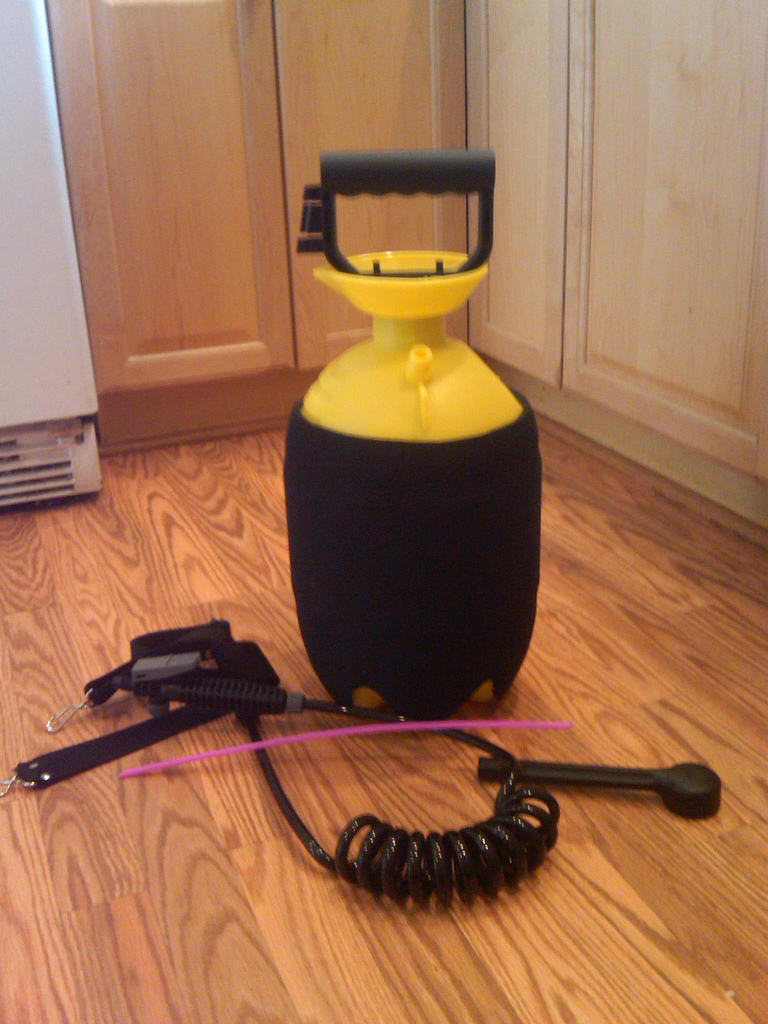
 You are required to choose your portable shower depending on the luggage you are planning to take with you. If you are planning to travel with a large backpack, then make sure that you seek out the lightest showers. Therefore, it is essential to ensure that you have considered this component before you purchase your camping portable shower.
You are required to choose your portable shower depending on the luggage you are planning to take with you. If you are planning to travel with a large backpack, then make sure that you seek out the lightest showers. Therefore, it is essential to ensure that you have considered this component before you purchase your camping portable shower.
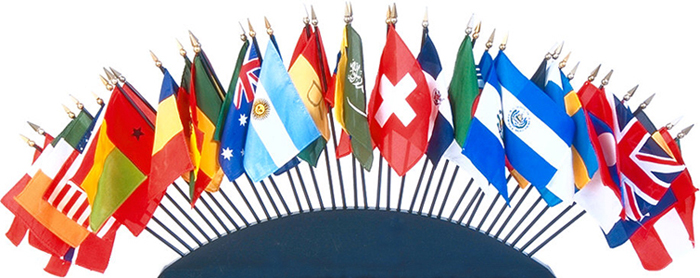




 Lastly, we have the most common way that most people have been watching their shows and series. This is through cable television. However, this avenue is limited for one has to wait for the time their show will run in order to watch it. In most instances, the schedule will conflict with the persons personal time. It is thus very restrictive and could be challenging for the viewer.
Lastly, we have the most common way that most people have been watching their shows and series. This is through cable television. However, this avenue is limited for one has to wait for the time their show will run in order to watch it. In most instances, the schedule will conflict with the persons personal time. It is thus very restrictive and could be challenging for the viewer.
 This is one of the techniques most beginners are required to know before they commence their riding. Therefore, make sure that your feet do not hang on the side. You are required to step on the foot pegs, or you can use heel guards and nerf bars. You can install these parts if your ATV does not have them. Even though it feels natural to let your feet dangle free, then, never should you try this because it is easy to get them caught in your spinning back tires.
This is one of the techniques most beginners are required to know before they commence their riding. Therefore, make sure that your feet do not hang on the side. You are required to step on the foot pegs, or you can use heel guards and nerf bars. You can install these parts if your ATV does not have them. Even though it feels natural to let your feet dangle free, then, never should you try this because it is easy to get them caught in your spinning back tires. Therefore, you need to make sure that you train on the steering before you commence riding ATVs.
Therefore, you need to make sure that you train on the steering before you commence riding ATVs.



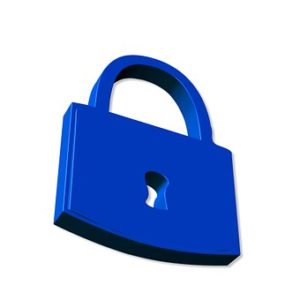
 taking the unit for inspections to avoid the likelihood of spending on major repairs. Finding the right AC contractor is not as simple as most people think. It takes more that just conducting an online search. This applies in particular if you are doing it for the first time. That said, here are a few tips preventive maintenance tips that could see you stay away from major air conditioning emergencies.
taking the unit for inspections to avoid the likelihood of spending on major repairs. Finding the right AC contractor is not as simple as most people think. It takes more that just conducting an online search. This applies in particular if you are doing it for the first time. That said, here are a few tips preventive maintenance tips that could see you stay away from major air conditioning emergencies. It is advisable to have your AC unit checked and repaired by a professional air conditioning expert. This is the only way to can be sure that all air conditioner problems are dealt with accordingly. The quality of services you receive depend on the contractor you will choose. As such, you need to take your time and ensure you select the best contractor in your entire neighborhood.
It is advisable to have your AC unit checked and repaired by a professional air conditioning expert. This is the only way to can be sure that all air conditioner problems are dealt with accordingly. The quality of services you receive depend on the contractor you will choose. As such, you need to take your time and ensure you select the best contractor in your entire neighborhood.
 Waterproofing your basement will give you many benefits which include a stronger foundation for your house to stand on and also the possibility of turning your basement into more than just a storage area. Basements can be made into home theater rooms, playrooms, bedrooms and much more if you are creative. Look online and check out some great ideas to transform this neglected part of your house into a useful space.
Waterproofing your basement will give you many benefits which include a stronger foundation for your house to stand on and also the possibility of turning your basement into more than just a storage area. Basements can be made into home theater rooms, playrooms, bedrooms and much more if you are creative. Look online and check out some great ideas to transform this neglected part of your house into a useful space. instances, people go to Christian Bible schools, Sunday schools, VBS, and church schools. It is important to spread joy whenever you visit young children by giving them some gifts. It is quite rewarding seeing a young kid smile whenever you give him or her small gift. Nowadays, you can find several giveaways in a christian shop online. Therefore, next time you visit children, take with you some of these giveaways so as to make the little ones happy.
instances, people go to Christian Bible schools, Sunday schools, VBS, and church schools. It is important to spread joy whenever you visit young children by giving them some gifts. It is quite rewarding seeing a young kid smile whenever you give him or her small gift. Nowadays, you can find several giveaways in a christian shop online. Therefore, next time you visit children, take with you some of these giveaways so as to make the little ones happy. tmas is a great time when the majority of families offer something to others or the church. The items can then be distributed among less fortunate people in the community. If a family is wealthy, they can purchase some items and give them to less fortunate ones. If you cannot purchase something new, then you can give your old clothes, which no longer fit you any more or even toys and donate them.
tmas is a great time when the majority of families offer something to others or the church. The items can then be distributed among less fortunate people in the community. If a family is wealthy, they can purchase some items and give them to less fortunate ones. If you cannot purchase something new, then you can give your old clothes, which no longer fit you any more or even toys and donate them.

 Compared to traveling by air which requires advance booking of travel, most trains allow walking clients who buy their tickets as they get into the coaches and start their journey.
Compared to traveling by air which requires advance booking of travel, most trains allow walking clients who buy their tickets as they get into the coaches and start their journey.



 If cupcakes are your strongest weakness and have no way to get over them, worry no more, there is a simpler way out. We love to sink our teeth into them and let the cream melt in our mouths. The problem is that most of us are not conversant with the whole procedure.
If cupcakes are your strongest weakness and have no way to get over them, worry no more, there is a simpler way out. We love to sink our teeth into them and let the cream melt in our mouths. The problem is that most of us are not conversant with the whole procedure. Another advantage is that you can make them just the way you like them. For example, if the ones you buy at your preferred store are deficient in sugar, you can add just a little more to satisfy your craving for sugar. That’s not all, if you are in the mood for a tantalizing fruit fragrance and taste, you can squeeze in some of its juice. This is a good way to make your fantasy come alive.
Another advantage is that you can make them just the way you like them. For example, if the ones you buy at your preferred store are deficient in sugar, you can add just a little more to satisfy your craving for sugar. That’s not all, if you are in the mood for a tantalizing fruit fragrance and taste, you can squeeze in some of its juice. This is a good way to make your fantasy come alive.
 o need to consider the hard drive. This is where your files, movies, music, and games are stored. The majority of the laptops come with 500 GB of the storage space. You need to check the speed of your drive. It is imperative for your gaming laptop to run at best possible performance. This explains why you need to use a SATA hard drive as you are guaranteed of high performance.
o need to consider the hard drive. This is where your files, movies, music, and games are stored. The majority of the laptops come with 500 GB of the storage space. You need to check the speed of your drive. It is imperative for your gaming laptop to run at best possible performance. This explains why you need to use a SATA hard drive as you are guaranteed of high performance.
 Here at Sell With Richard Your House, they will buy your home as is; you will not have to worry about foreclosure or repairs. They will come out and make an appointment to look at your home, and in as little as 24 hrs they will give you a fair offer. If you agree to the offer, they will have the deal closed in as little as seven days. That means cash in your hands in about a week. This company has been doing great business for over many years now. If you go to their website, you will see their excellent service.
Here at Sell With Richard Your House, they will buy your home as is; you will not have to worry about foreclosure or repairs. They will come out and make an appointment to look at your home, and in as little as 24 hrs they will give you a fair offer. If you agree to the offer, they will have the deal closed in as little as seven days. That means cash in your hands in about a week. This company has been doing great business for over many years now. If you go to their website, you will see their excellent service.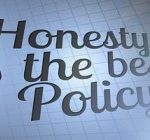 Selling your home without an agent is a big advantage on your part.
Selling your home without an agent is a big advantage on your part.
 We normally see, for example, at a wedding the groom and the bride busy having their photographs taken by a professional photographer, while all other guests are just sitting there bored, waiting for their turn to be photographed alongside the happy couple. But when you have a photo booth, the guests are going to be in a fun mode, even before the actual event starts. They are going to have all the fun while you’re busy having your photos taken by your professional cameraman.
We normally see, for example, at a wedding the groom and the bride busy having their photographs taken by a professional photographer, while all other guests are just sitting there bored, waiting for their turn to be photographed alongside the happy couple. But when you have a photo booth, the guests are going to be in a fun mode, even before the actual event starts. They are going to have all the fun while you’re busy having your photos taken by your professional cameraman. When you are planning to have any event, be it a wedding ceremony, a corporate event, or your graduation party, you should take into account all the above-mentioned advantages of a photo booth. When you do this, you are going to love every moment of your event.
When you are planning to have any event, be it a wedding ceremony, a corporate event, or your graduation party, you should take into account all the above-mentioned advantages of a photo booth. When you do this, you are going to love every moment of your event. ll be required to attend various training programs, mandatory treatments, and anonymous awareness sessions. Moreover, if the accident resulted in deaths, you are likely to serve a long prison sentence. Thus, if you are charged with DUI case can be an upsetting and frightening at the same time. This explains why it is necessary to choose a top criminal defense attorney. The following are some tips to help you:
ll be required to attend various training programs, mandatory treatments, and anonymous awareness sessions. Moreover, if the accident resulted in deaths, you are likely to serve a long prison sentence. Thus, if you are charged with DUI case can be an upsetting and frightening at the same time. This explains why it is necessary to choose a top criminal defense attorney. The following are some tips to help you: n DUI case, you ought to understand that chances of coming out unscathed financially and emotionally are almost impossible. Thus, you need to choose a lawyer who is honest as far as your case is concerned and helps you get prepared financially. Fatal accidents may guarantee you a long-term jail sentence. You should stay away from the lawyers that promise to get out of the DUI case without paying a dime.
n DUI case, you ought to understand that chances of coming out unscathed financially and emotionally are almost impossible. Thus, you need to choose a lawyer who is honest as far as your case is concerned and helps you get prepared financially. Fatal accidents may guarantee you a long-term jail sentence. You should stay away from the lawyers that promise to get out of the DUI case without paying a dime.
 Now you can find the majority of the devices you want on various sites that sell them. If you still can’t find what you are searching for just like I said before you need to go on online and have a look. You will want your radar detector at least to deliver a jamming signal and be capable of reading radar and how far away it is. You can pay for one that is just for your bicycle. It’ll have ear jacks so that you will be able to get one in one ear and then drive and hear the other. It will probably do the job every bit as good as driving in a car.
Now you can find the majority of the devices you want on various sites that sell them. If you still can’t find what you are searching for just like I said before you need to go on online and have a look. You will want your radar detector at least to deliver a jamming signal and be capable of reading radar and how far away it is. You can pay for one that is just for your bicycle. It’ll have ear jacks so that you will be able to get one in one ear and then drive and hear the other. It will probably do the job every bit as good as driving in a car. Different websites carry on the auction business for any product. Do a bit of online research on different models. The E-Bay is the most popular site that is involved in selling the radar detectors on the auction basis. The popularity of this device is increasing with the passage of time.
Different websites carry on the auction business for any product. Do a bit of online research on different models. The E-Bay is the most popular site that is involved in selling the radar detectors on the auction basis. The popularity of this device is increasing with the passage of time.



 The first thing to keep in mind when planning a budget accommodation is that there are countless fantastic deals available out there – you just need to find them. That said, it’s often worth your time to shop around for hotel and flight deals.
The first thing to keep in mind when planning a budget accommodation is that there are countless fantastic deals available out there – you just need to find them. That said, it’s often worth your time to shop around for hotel and flight deals. If you’re open and flexible to the idea of traveling anywhere in Spain, for example, you’re more likely to find a deal quicker than if your mind is set on traveling to Barcelona. On a budget accommodation, you may not be able to splurge on expensive dinners or hotels – but that doesn’t mean that you can’t have a good time.
If you’re open and flexible to the idea of traveling anywhere in Spain, for example, you’re more likely to find a deal quicker than if your mind is set on traveling to Barcelona. On a budget accommodation, you may not be able to splurge on expensive dinners or hotels – but that doesn’t mean that you can’t have a good time.
 Keep the emergency card hidden inside your clothing somewhere so that if your belongings are stolen, you still have your emergency card.
Keep the emergency card hidden inside your clothing somewhere so that if your belongings are stolen, you still have your emergency card. Learn about cultural differences in the regions where you will be traveling. For instance, you may be able to wear shorts in Western Europe, but this may cause offense in some other countries of the world.
Learn about cultural differences in the regions where you will be traveling. For instance, you may be able to wear shorts in Western Europe, but this may cause offense in some other countries of the world.

 rtant factor when it comes to determining the value of a hotel. A luxurious hotel needs to have a wide range of best facilities that should be able to beat the customer’s expectations. Most people who seek to this kind of hotels are people of high profile and they would in most instances love to do everything in the hotel’s comfort grounds. People would expect to find facilities that would not be found anywhere in luxurious hotels. Recreational facilities should never miss in these hotels.
rtant factor when it comes to determining the value of a hotel. A luxurious hotel needs to have a wide range of best facilities that should be able to beat the customer’s expectations. Most people who seek to this kind of hotels are people of high profile and they would in most instances love to do everything in the hotel’s comfort grounds. People would expect to find facilities that would not be found anywhere in luxurious hotels. Recreational facilities should never miss in these hotels.
 A domestic water softener need not be an expensive outlay. Indeed it can be an investment. Any person that has a home water softener will tell you that they would not go back to ‘hard water’ living.
A domestic water softener need not be an expensive outlay. Indeed it can be an investment. Any person that has a home water softener will tell you that they would not go back to ‘hard water’ living. Perhaps the greatest asset of installing a home water softener is the effect it has on the heating elements on your hot water system and pipes and appliances such as your washing machine. A water softener will over time remove existing scale from hot water pipes and heaters increasing their efficiency and ultimately reducing heating costs, washing machines last longer with soft water as the elements will not fail due to scale build up.
Perhaps the greatest asset of installing a home water softener is the effect it has on the heating elements on your hot water system and pipes and appliances such as your washing machine. A water softener will over time remove existing scale from hot water pipes and heaters increasing their efficiency and ultimately reducing heating costs, washing machines last longer with soft water as the elements will not fail due to scale build up. one.
one. Safety first
Safety first
 NGOs have their partnership with various government organizations, private companies, or public firms. They have volunteers who help the common people to fulfill the basic needs to live a life full of self- esteem. It does not only contributes to strengthening the canvas of civil societies but also helps reduce the existing status gap.
NGOs have their partnership with various government organizations, private companies, or public firms. They have volunteers who help the common people to fulfill the basic needs to live a life full of self- esteem. It does not only contributes to strengthening the canvas of civil societies but also helps reduce the existing status gap. Ninety percent of the world’s society lives below the poverty lines. That is more visible in developing countries. There are a significant number of schemes that were created by the federal government to enrich the lives of the unlucky and the underprivileged. Around the federal government of Countries are supporting the downtrodden and the underprivileged, Non-Governmental Organizations add an equal strategy.
Ninety percent of the world’s society lives below the poverty lines. That is more visible in developing countries. There are a significant number of schemes that were created by the federal government to enrich the lives of the unlucky and the underprivileged. Around the federal government of Countries are supporting the downtrodden and the underprivileged, Non-Governmental Organizations add an equal strategy. Convenience is achieved with hiring a professional repair service. All you are required to do is contact a research and get the best appliance repair company in your area. After that make a call and a group of specialized technicians will be sent to your home within 24 hours. Worries of carrying the appliance you need repaired to a technician shop and leaving it there for like two weeks are taken care of. The specialists will do their work from your place. Tell the individual you are talking to over the phone the appliance needing repair, this enables then send the right technician with the right tools and equipment to get your job done.
Convenience is achieved with hiring a professional repair service. All you are required to do is contact a research and get the best appliance repair company in your area. After that make a call and a group of specialized technicians will be sent to your home within 24 hours. Worries of carrying the appliance you need repaired to a technician shop and leaving it there for like two weeks are taken care of. The specialists will do their work from your place. Tell the individual you are talking to over the phone the appliance needing repair, this enables then send the right technician with the right tools and equipment to get your job done. Another benefit is that they will send you experts to your place anytime. They look into the appliance and try as much as possible to repair it without having to change parts. We know of many con people who will remove parts of your appliance and ask you to purchase new ones, while in a real sense, there was no need of new parts. If you had contacted research well and landed a good appliance repair company, purchase of new parts will be only if necessary and genuine, and the experts will do it carefully not to further spoil the equipment.
Another benefit is that they will send you experts to your place anytime. They look into the appliance and try as much as possible to repair it without having to change parts. We know of many con people who will remove parts of your appliance and ask you to purchase new ones, while in a real sense, there was no need of new parts. If you had contacted research well and landed a good appliance repair company, purchase of new parts will be only if necessary and genuine, and the experts will do it carefully not to further spoil the equipment. The main question for every job seeker is where to get a vacancy, and the newspaper in Sydney is among the leading sites where employers advertise for job opportunities. As a
The main question for every job seeker is where to get a vacancy, and the newspaper in Sydney is among the leading sites where employers advertise for job opportunities. As a  Agencies are more useful to those who already know the kind of job they want. Construction companies already know exactly the kind of job they are looking for hence they can visit an agency who will hunt jobs on their behalf. We have a million of them in Sydney hence one should be careful when choosing the agency to sign in with. You might be required to pay the agency for getting the job for you. That is why you should be very careful on the choice you make. Some are frauds and might want to take advantage of you. Do not show them that you are too desperate for the job.
Agencies are more useful to those who already know the kind of job they want. Construction companies already know exactly the kind of job they are looking for hence they can visit an agency who will hunt jobs on their behalf. We have a million of them in Sydney hence one should be careful when choosing the agency to sign in with. You might be required to pay the agency for getting the job for you. That is why you should be very careful on the choice you make. Some are frauds and might want to take advantage of you. Do not show them that you are too desperate for the job.